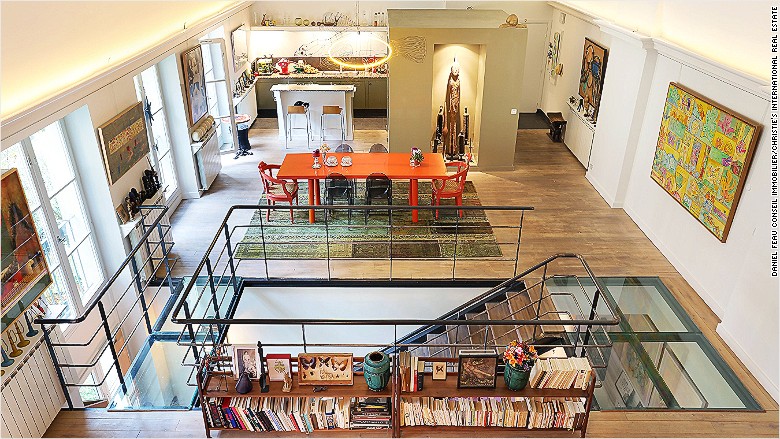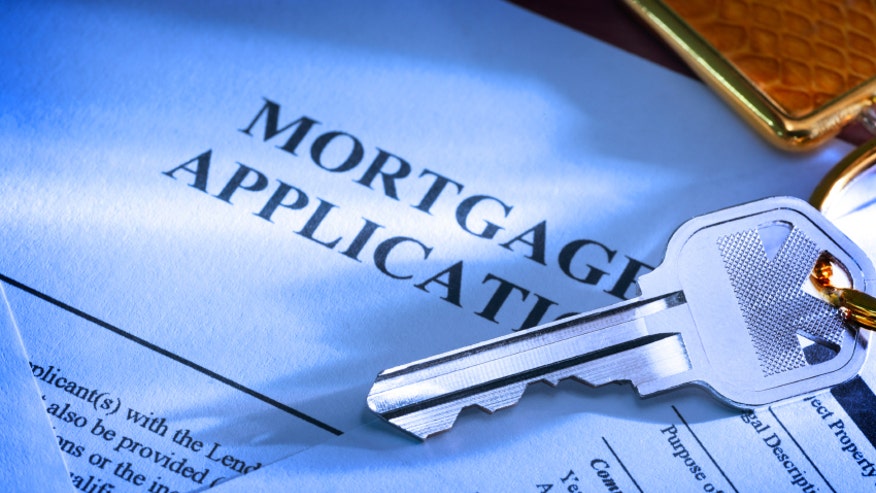
Tuesday, June 30, 2015
California Buyers Face Heated Competition
DAILY REAL ESTATE NEWS | WEDNESDAY, MAY 06, 2015
Bidding wars are showing signs of losing steam nationwide, but not in parts of California.
In San Francisco, home buyers still find that bidding war are the norm. There, 94 percent of properties face competition, Redfin agents say, compared to 88 percent last year. What’s more, 72 percent of the homes are selling for more than the asking price.
“It’s rare that I write an offer with any contingencies, whether it’s for inspection, financing, or even appraisal,” says Redfin agent Brigid Van Randall in Silicon Valley. “Making an offer completely non-contingent is an effective way to compete with other buyers because essentially you’re committing to buying the home no matter what flaws it may have or how you come up with the money.”
More on the spring market:
The booming technology industry continues to propel the San Francisco housing market, according to Dwight Johnston, chief economist for the California Credit Union League.
“The Bay area has a vast amount of money that is driving a lot of the competition, and there is no supply in the market at all,” Johnston told HousingWire. “The more desirable areas are built out, and they are all competing for the same houses at the same time. They have so much money that they don’t have to worry about being rational. … Anything that is coastal or has any special allure to it, you will see some bidding wars. This is what California has become.”
Sacramento, Calif., saw a big jump in multiple offers in March, with 81 percent of properties encountering a bidding war compared to 66 percent last year, Redfin reports. Ventura, Calif., has one of the lowest bidding war percentages in California but one of the fastest growing – gaining from 33 percent last year to 54 percent this year, according to Redfin’s housing report. Nearly 20 percent of the homes there are selling for above the asking price.
Buyers are being most successful at winning a bidding war with cover letters (43 percent), followed by waiving the inspection (20 percent), waiving financing contingency (15 percent), or paying in all-cash (11 percent), according to the report.
While California markets heat up, Redfin reports that bidding wars are showing signs of dropping nationwide. Sixty-one percent of offers written by Redfin agents in March involved a bidding war, down slightly from 63 percent in March 2014. Inventories nationwide have picked up, which has helped many markets see a slight decrease in the number of bidding wars for properties, the brokerage says.
Source: “Homebuyers Faced Fewer Bidding Wars in March Thanks to Surge in New Listings,” Redfin Research Center (May 5, 2015) and “San Francisco Leads the Nation in Property Bidding Wars,” HousingWire (May 5, 2015)
Friday, June 26, 2015
Housing Flips Slip to Lowest Level in Years
DAILY REAL ESTATE NEWS | THURSDAY, MAY 07, 2015
Four percent of all U.S. single-family home sales in the first quarter were flips, sold for a second time within a 12-month period, according to RealtyTrac's first quarter 2015 U.S. Home Flipping Report. It marked the lowest number of homes flipped since the second quarter of 2011, when just 3.4 percent of all single-family home sales were considered flips.
Read more: Housing Flips May Start to Flop
In the first quarter, the average gross profit – the difference between the purchase price and the flipped price – for completed flips was $72,450, according to RealtyTrac’s report. That represents an increase from $65,290 in the previous quarter and is the highest level since the first quarter of 2011.
"The strong returns for home flippers in the first quarter demonstrates that there is still a need in this recovering real estate market for move-in ready homes rehabbed to more modern tastes, particularly given the dearth of new homes being built," says Daren Blomquist, vice president at RealtyTrac. "The challenge for flippers in 2015 will be finding inventory to flip. Flippers ideally want to buy distressed homes that provide them with an opportunity to add value in markets where there is good affordability and ample demand from buyers for the finished flip product — whether those buyers are millennials becoming first-time homebuyers, baby boomers purchasing their present or future retirement home, or buy-and-hold real estate investors looking for turnkey rental properties that cash flow."
According to RealtyTrac's report, investors saw some of the largest returns on housing flips in the first quarter in Baltimore; Deltona-Daytona Beach-Ormond Beach, Fla.; Ocala, Fla.; Lakeland, Fla.; Detroit; Tampa; Pittsburgh; Memphis, Tenn.; and Chicago.
Meanwhile, the following markets are where flips accounted for the highest percentage of all home sales in the first quarter:
- Memphis, Tenn.: 10.6%
- Ocala, Fla.: 8%
- Miami: 7.9%
- Tampa, Fla.: 7.4%
- Sarasota, Fla.: 7.2%
- Los Angeles: 6.6%
- Detroit: 6.5%
- Las Vegas: 6.3%
- San Diego: 6.1%
- Virginia Beach, Va.: 5.9%
- Jacksonville, Fla.: 5.9%
Source: RealtyTrac
Tuesday, June 23, 2015
Investors Eye Millennial Rising in Housing
DAILY REAL ESTATE NEWS | THURSDAY, MAY 07, 2015
As the millennial generation ages, investors see big opportunity in the housing market as these young adults transition into parenthood. In fact, more fund managers reportedly are buying up companies that stand to benefit from this transition, such as home builders and mortgage lenders.
Read more: Suburbs Draw Millennials Wanting More Space
"A generation that’s been stereotyped as urban, single and aghast at the idea of a car-based life in the suburbs is starting to age, prompting fund managers to bet on companies that should benefit if the U.S. birth rate reverses a six-year slump," Reuters reports.
About 4.3 million millennials will turn 30 this year. By 2020, that number will jump to 4.6 million. That means more adults will soon be in their early 30s than at any other time in U.S. history, according to a Wells Fargo analysis of U.S. Census data.
"Look at what a 25-year-old single person spends money on, and look what a 35-year-old with kids spends money on," says Bill Smead, portfolio manager of the $1.1 billion Smead Value fund. "This is a chance to get rich on that transition." Smead’s portfolio holds homebuilder NVR Inc and mortgage lenders such as Wells Fargo & Co and Bank of America Corp.
Millennials already have become the largest segment of home buyers, according to the National Association of REALTORS®. millennials accounted for 32 percent of home sales in 2014, up four percentage points from two years earlier. What’s more, they’re buying up homes in the nearby suburbs rather than in urban cores.
"Especially in the older millennials, we're seeing a move towards more traditional patterns, just on a delayed time frame," says Sarah House, an economist at Wells Fargo.
Source: "As Millennials Reach Parenthood, Fund Managers Bet on ‘Burbs," Reuters (May 6, 2015)
Friday, June 19, 2015
Americans are scooping up real estate bargains... overseas
Try these quick and simple updates to give your sleep space a fresh, warm-weather mood
More Americans are taking the leap to buy that overseas pied-a-terre they've been thinking about.
"The U.S. dollar is still strong and the economy is good and the rest of the world is a little softer," said Jason Kumpf, a real estate specialist at USForex. "It's a great time to increase your pieces on the international Monopoly board."
Property prices in some European markets fell 40-50% during the financial crisis and haven't fully recovered, according to global real estate consultancy Knight Frank.
Combine that with the strength of the U.S. dollar creating favorable exchange rates, and deals abound. For example: A €500,000 home cost around $683,000 last July, according to Knight Frank. Now, that property has a price tag of roughly $558,000.
Experts identified France, Spain, Italy, Germany and Canada as markets being pursued by American buyers.

France is looking particularly attractive.
The number of clients buying properties in France increased nine-fold in 2014 from 2013 at USForex, and this year is looking even more promising.
"High-net-worth buyers have been circling around properties in the south of France for the last couple of years," said Dan Conn, CEO of Christie's International Real Estate. "It's an incredible time to buy."
Paris is also seeing increased activity: today, 19% of Christie's buyers in the capital were American, up from 14% in 2010.
Germany has also been drawing in American buyers recently, according to Kumpf, as the number of U.S. buyers who transferred money to purchase property there has doubled in the last year.
Spain and Italy have had a slower economic rebound, which means better discounts and opportunities, according to Conn. For example, Sardinia, an island off the coast of Italy, has experienced little buying activity since the downturn ... until now. "You are starting to see emerging interest from U.S. buyers," Conn said.
Interest in rentals in Italy started to rise last year, and that's a strong indicator that sales will follow, said Rupert Fawcett, head of Knight Frank's Italian desk.
Tuscany, Florence, and Lake Como are the hot spots in the country at the moment, he said.
"I am not expecting the flood gates to open, but the tap had very much been switched off over the last four to five years, so to see any American interest coming back is already an increase."

Spain, which has been a popular market for Europeans looking for a vacation home, is starting to catch the attention of Americans, particularly Barcelona. "It's a hybrid city and resort," said Conn. There's also been discussions of a new luxury waterfront development in the city, which could increase interest.
London is also seeing increased attention from American buyers, but the conversion rate to a sale is still relatively low, according to Jennet Siebrits, UK head of residential research at CBRE. "I think once the U.K. general elections are out of the way, that might be a catalyst."
In Latin America, Brazil is an attractive option for U.S. buyers, according to a report from Christie's International Real Estate, due to deflated property prices and a drop in its currency.
Are you a homebuyer in a seller's market facing stiff competition finding your dream home? Are bidding wars common in your area? Tell us about your house hunt horror story and you could be featured in an upcoming story on CNNMoney.
CNNMoney (New York) May 11, 2015: 11:33 AM ET
Tuesday, June 16, 2015
Study: Home Ownership Linked to Happiness
DAILY REAL ESTATE NEWS | FRIDAY, MAY 08, 2015
Home ownership can lead to higher levels of well-being, according to data from the OECD Better Life Index, which gauges the quality of life worldwide by factoring in such things like housing, jobs, civic engagement, health and safety.
The heightened sense of happiness that comes from home ownership may be more than just getting a new home but more closely tied to the basic need for shelter, says Aida Caldera Sanchez and Caroline Tassot, authors of an analysis about the index. Also, home ownership can lead to status and independence – qualities that often are linked to happiness, their analysis shows.
On the well-being index, housing outperformed all the all other indicators monitored – like education, safety, and environment – by the highest amount in the Midwest, with 75 percent of the states ranking housing as most important to happiness. In the South, housing tops all other indicators in 70.6 percent of the states, and in the West housing was tops in only 15 percent of the states compared to the other indicators.
View how housing stacks up in your area at the OCED Regional Well-being website.
Source: OCED Regional Well-being and "Homeownership Linked to Happiness," RISMedia (May 7, 2015)
Friday, June 12, 2015
Builders Try to Lure Buyers with 'Green'
DAILY REAL ESTATE NEWS | FRIDAY, MAY 08, 2015
Homebuilders are increasingly embracing green certifications and finding ways to incorporate greater sustainable features into their homes in response to rising buyer demand, reveals a new analysis of the BUILDER 100 list, rankings of the top builders in the country.
Eye on Green Homebuilding
Since 2012, there has been a rise in the overall number of BUILDER 100 respondents who report they meet green standards -- rising from 110 builders in 2012 to 149 in 2014.
For those home buyers seeking more "green" residences, the following homebuilders topped BUILDER's 100 list for building the most green homes in 2014:
- Fulton Home Corp. (which built all of its homes to LEED, Energy Star and a regional green building program – the only builder to do so)
- Savvy Homes
- The Warmington Group
- Arbor Homes
- Elliott Homes Inc.
- Century Communities Inc.
- Saint Aubyn Homes LLC
- Tilson Home Corp.
- Caviness and Cates Communities
- Newmark Homes
Source: "Green Building Makes Inroads in the Builder 100 List," BUILDER (April 29, 2015)
Tuesday, June 9, 2015
VA Financing & Mortgages Options
VA Financing & Mortgages Options

The VA guarantees a variety of home loans. There are two basic types of loans with two additional options that are appealing to servicemembers with special financial goals:
Fixed-Rate Mortgage
This is the loan that most people think of when considering a mortgage. The interest rate never changes, and the monthly payment will remain the same over the life of a loan. Fixed rate loans are usually for 15 or 30 years.
Tip: Get a fixed-rate mortgage if stability is important or if you have less confidence about the economy or job security.
Adjustable Rate Mortgage
An Adjustable Rate Mortgage is a fluid loan where the interest rate changes with fluctuations in the market. The first-year rate (otherwise known as the teaser rate) is generally a couple of percentage points below the market rate. The "cap" is the upper limit of the interest rate. If a teaser rate is 4%, and there is a five-point cap, then the highest that an interest rate could go would be 9%. The amount that the interest rate can rise each year is usually limited to one or two percentage points per year, but the frequency at which the rate adjusts can vary. If interest rates go up, an ARM will adjust accordingly.
Tip: Get an ARM if you expect to stay in a house for less than five years.
VA Hybrid Adjustable Rate Mortgage Loan
This loan is fixed for period of 3 or 5 years, and then adjusts annually thereafter. It allows a 1% annual interest rate adjustment after the initial fixed interest rate period, and a 5% interest rate cap over the life of the loan. Interest rate adjustments must occur on an annual basis, except for the first adjustment, which may occur no sooner than 36 months from the date of the borrower's first mortgage payment on the 3/1 ARM or 60 months for a 5/1 ARM. The loan term is 30 years for either of these loans. Some short-term homebuyers like this option because of the lower rates in the early years.
Graduated Payment and Growing Equity Mortgage
Both of these loans start with a low initial monthly payment and gradually increase. A GPM begins to increase in the sixth year of the loan while a GEM will gradually increase payments directly into the principal of the loan resulting in an early loan payoff.
Mortgage Option Pros and Cons
There are really just two main loan categories -- fixed and variable-rate. A variable-rate agreement, as distinguished from a fixed-rate agreement, calls for an interest rate that may fluctuate over the life of the loan. The rate is often tied to an index that reflects changes in market rates of interest. A fluctuation in the rate causes changes in either the payments or the length of the loan term. Limits are often placed on the degree to which the interest rate or the payments can vary. Here are some of these pros and cons for these two main types:
| Fixed-Rate Mortgage | Adjustable-Rate Mortgage |
| Pro: Homebuyers can determine exactly how much they will pay each month for the next 30 years. | Pro: Because interest rates are lower for an ARM, it's easier to borrow more. This can help first-time homebuyers afford more home. |
| Con: Buyers pay a premium for predictability as an FRM will generally cost more than a ARM over the life a 15 to 30 year home loan. | Con: Rising interest rates can create financial hardship if the new monthly mortgage payment rises beyond the owner's budget. |
Friday, June 5, 2015
Report: S.F. Home Prices Growing Faster than Other U.S. Cities
Prices in the census area that includes San Francisco, Alameda, Contra Costa, Marin and San Mateo counties grew by 10.3 percent in March.
By Bay City News Service image via Shutterstock
Home prices in the San Francisco area grew faster during the past year than prices in any other U.S. city surveyed, according to a report released Tuesday.
The S&P/Case-Shiller Home Price Index shows prices in the census area that includes San Francisco, Alameda, Contra Costa, Marin and San Mateo counties grew by 10.3 percent in March compared to the same time in 2014. Prices in the area grew faster in March than any other metropolitan area surveyed in the report. Prices were up 3 percent in March in the San Francisco area compared with February. That’s after a 2.1 percent gain in February, according to the index. The monthly values are not adjusted for seasonal affects. Seasonally adjusted data would make the monthly increases 1.7 percent in March and 3.4 percent in February.
Home prices also rose nationally, with both the 10-city and 20-city indexes published by S&P/Case-Schiller showing growth over both the past year and the past month. The only area that did not experience a month-over-month increase in home prices was New York City.
Tuesday, June 2, 2015
How Much Rent Can You Afford?
Consider your monthly expenses and long-term financial goals to make sure you don’t overextend yourself.
The oft-noted rule of thumb is that you should try to stick with spending a maximum of 30 percent of your income on rent. However, that rule of thumb rarely indicates whether or not that should be gross income, or net income after taxes, or if related housing expenses like utilities should be included in that 30 percent.
The reality is that how much you should spend on rent really depends on a lot of factors that are personal to the renter. And unfortunately, in many cities spending only 30 percent of your income on housing is just a pipe dream.
So how much should you spend?
The best way to determine how much you can spend on rent is to evaluate how much money you have coming in each month, and how much you have going out.
Suppose you earn $4,000 per month gross income, and your net paycheck after social security, unemployment insurance, and tax withholdings leaves you $2,800 per month in the bank.
Now subtract your car payment, gas and insurance costs, credit card payments, school loan payments, cell phone costs, gym membership, food, utilities costs, and some amount for entertainment, dates, clothing, and any and everything else you typically spend money on each month.
Now, how much is left over?
Optimally, some portion of the money left over should go into an investment account each month — even if it is only $25. (If you’re saving money at work via a 401(k) plan, that could mitigate the need to have extra money left each month to invest.)
If you have $1,800 per month left after subtracting all your expenses, then you should try to spend $1,400 or less on rent so you can save $400 per month. If you have $1,400 left over, then you can spend $1,000 on rent so you have money left over to invest.
A rental affordability calculator can help you determine what you can spend in a specific area.
Living within your means
Doing a budget might be an eye opener. You could find that you’re spending too much on coffee, dining out, or hobbies. If you spend more than you earn, your credit card balances will increase, and that can be very bad for your personal finances. You might want to work more hours to increase your income, cut spending, or get a bailout — whatever it takes to pay off the debt.
If you’re one of the lucky ones with no car payment, credit card debt, or school loan payments, and you make significantly more than you earn each month, that doesn’t mean you should spend whatever is left on rent. Try to live within your tastes and desires, while saving as much money as possible for your future and buying a home.
Spending 30 percent of your income on rent is a nice feel-good number, but it may not be feasible. The truth is, you need to look at your own personal income, spending habits and debts to get a picture of what you can afford. Make sure what you can “afford” is calculated after all your expenses and most importantly after you are socking away some money for your future.
Related:
- Rents Are Up, and Not Where You Might Expect
- Is Paying Rent in Advance a Good Idea?
- Old vs. New Apartments: The Renters’ Dilemma
Note: The views and opinions expressed in this article are those of the author and do not necessarily reflect the opinion or position of Zillow.
Subscribe to:
Posts (Atom)

